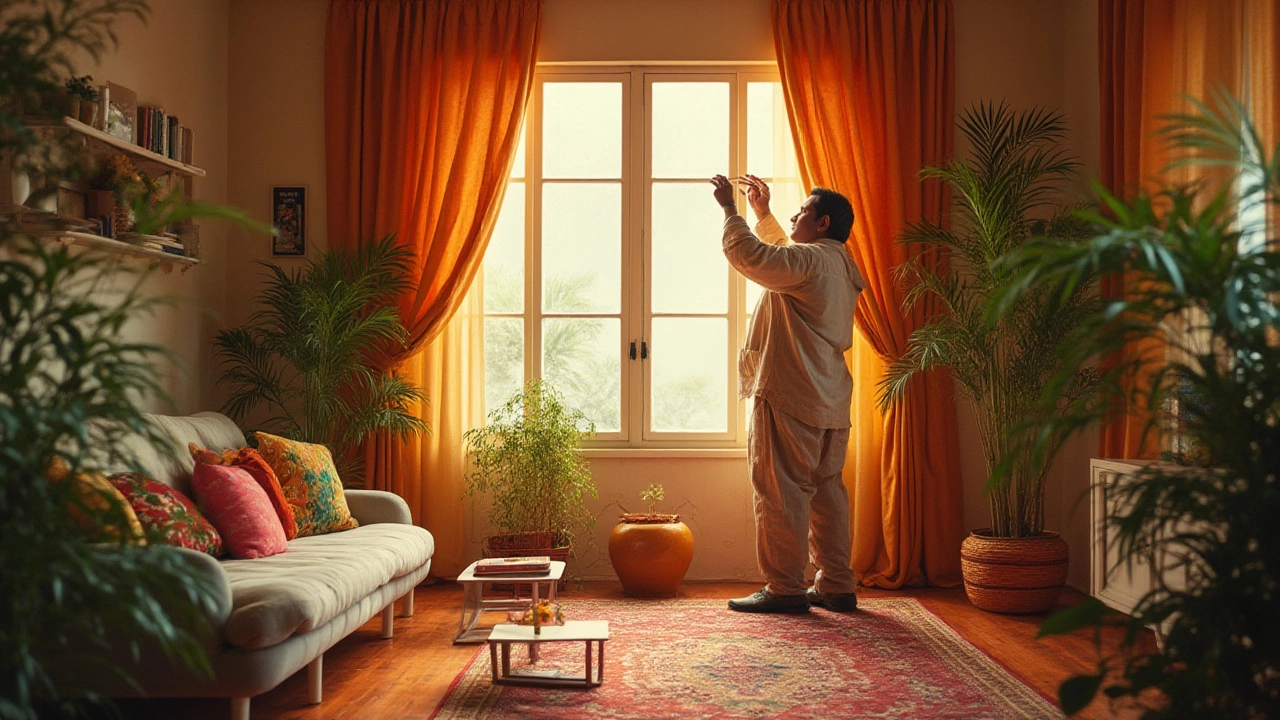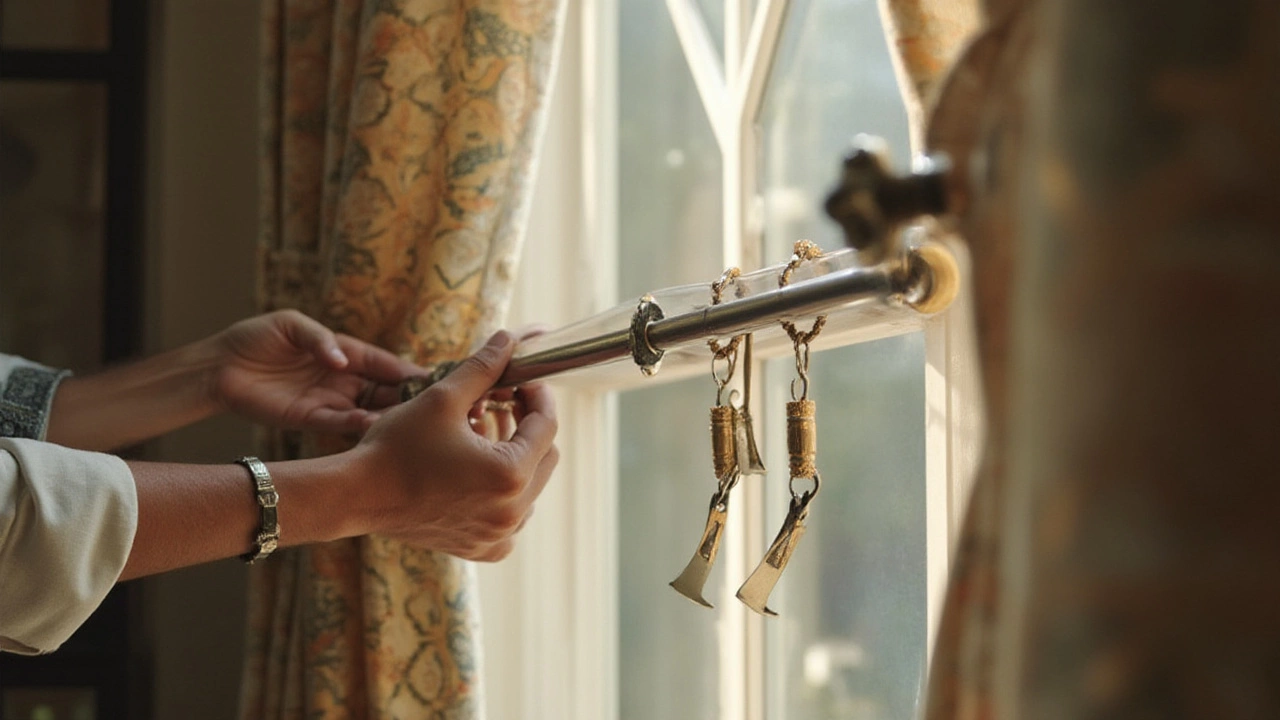Curtain Hanging Mistakes: Common Errors and How to Fix Them

Ever peeked through a neighbour’s window and wondered why their curtains just look… odd? Not because of the fabric or pattern, but the way they’re hung. It’s wild how easily a stunning curtain can be ruined by putting the rod an inch too low, or not letting the fabric skim the floor. I’ve seen mates spend a fortune on drapes and then hang them so clumsily, it’s like decorating with tea towels. How could something so simple be so easy to mess up?
Choosing the Right Spot: Height and Width Blunders
Hands down, the most common mistake people make is sticking the curtain rod right above the window frame. Sure, it makes sense if you just want to cover the glass, but it shrinks your whole room. Hanging curtains higher—at least 15 cm above the frame, or even closer to the ceiling—does wonders. Your window looks grander, ceilings feel taller, and trust me, it adds a touch of drama (the good kind, not the soap opera kind). Another miss: not extending the rod wide enough beyond the window sides. Hang the rod 20–30 cm past the frame so when the curtains are open, the whole window shines and the room gets all the light it deserves. You’d think it wouldn’t matter, but check out before-and-after Instagram posts—those few extra centimetres change everything.
There's a real science to getting this right. According to the British Curtain Association survey from late 2023, over 63% of homeowners hang their rods less than 10 cm above the window. Not surprisingly, 78% of those thought their rooms looked “smaller than expected.” The rule to remember: hang your rods high and wide. It’s not just some interior design mumbo jumbo—it’s the cheapest way to make your room feel like a million quid. I even tried it in my lounge, and Rufus (my retriever) now prefers napping under the sunbeam that floods in. He knows what’s up.
Choosing the Right Length: Curtains Not Hitting the Mark
The second tripwire? The length. Curtains that just dangle awkwardly halfway, stopping above the skirting board, scream “cheap hotel.” The best look is when the curtains just kiss the floor—or for a cosier vibe, let them puddle a few extra centimetres. Measuring matters: always start from your planned rod height down to the floor or wherever you want them to end. Getting this wrong is like buying new shoes and choosing the wrong size; it just never feels or looks right. And watch out for floor obstacles: radiators, sills, or furniture might need you to make small tweaks, but don’t let them bully you into weird curtain shapes.
There’s an actual debate: to puddle or not to puddle? Fashion editors at Elle Decoration UK say “puddle” for traditional, formal rooms—think velvet in the dining room. For modern spaces, keep it crisp just above the floor—anything floating higher will chop the room’s vertical line. British curtain retailers published a table last year showing average lengths:
| Style | Distance from Floor |
|---|---|
| “Floating” | 2 cm above floor |
| “Kissing” | Just grazing floor |
| “Puddling” | 3–10 cm onto floor |
Pick what looks best for your space—and measure, measure, measure.

Picking the Right Hardware and Fabric: Why Details Matter
Ever seen heavy curtains slowly sag because the rod’s about as sturdy as a spaghetti stick? Or shiny chrome grommets chilling with rustic linen? Choosing the wrong rod and hardware unbalances the whole job. Big windows need heavy-duty rods and solid wall anchors—don’t risk it with the flimsy stuff. If you’re dealing with bay windows or awkward spaces, consider flexible tracks or bespoke rods for a snug fit. And don’t underestimate brackets: you’ll likely need centre support for rods over 180 cm, or risk seeing a sad curve over time.
Next up, fabric choice makes all the difference. Heavy fabrics like velvet or brocade add warmth but squeeze a small room. Lightweight sheers can turn a sun-drenched space into a fresh oasis, but don’t expect them to block light for your Netflix binge. Thinking about cleaning? Machine-washable blends are a lifesaver, especially if you’ve got pets who like to bark at pigeons all day (guilty). If you want blackout, get lined curtains and make sure hardware can handle the extra heft. A fun stat: John Lewis reported 34% more returns in 2024 for curtains bought “by eye” instead of after measuring—shoppers underestimated weight or misjudged colour in different lighting.
Matching your hardware to other fittings isn’t just for perfectionists. It ties the room together and makes the curtains blend naturally. If you’re stuck, matte black or brushed gold is timeless, and works with nearly any palette.
Installation Hazards: Measuring, Drilling, and Tidy Results
This is probably the most dreaded part, but it’s where most folks mess up. Skip the step of measuring (not by guessing, but by actually using a steel tape), and you’ll pay for it with uneven, wonky curtains. Mark every drill point, use a spirit level, and double-check the wall type—since drywall anchors are different in strength from what you’d use in brick (no one wants a curtain avalanche). Make sure the brackets are at exactly the same height. That “close enough” approach leads to lopsided panels swaying at different angles.
Step-by-step, here’s the fool-proof method:
- Mark the rod height at least 15 cm above the window frame.
- Measure width, ensuring rod extends 20–30 cm beyond the sides.
- Double-check all measurements, especially length from rod to floor.
- Pre-drill holes, use correct wall anchors, mount brackets securely.
- Attach rod and test curtain weight before dressing panels.
Keep a vacuum handy—drilling always leaves a mess, and you don’t want dust on fresh fabric. Before you bask in curtain glory, steam or iron the panels. Factory folds cling like a bad hair day, so a quick press lets the fabric fall naturally. Last tip: adjust the fabric after hanging so each fold looks even, not bunched or baggy. It’s the little tweaks that turn a “DIY disaster” into “professional finish.”
Get these steps right, and you’re set for years of smooth-gliding, wall-to-wall elegance. No more side-eyes from design snobs, or wondering why your lounge feels smaller than it actually is. And if the dog can nap happily in the sun, maybe you’ve just nailed it.